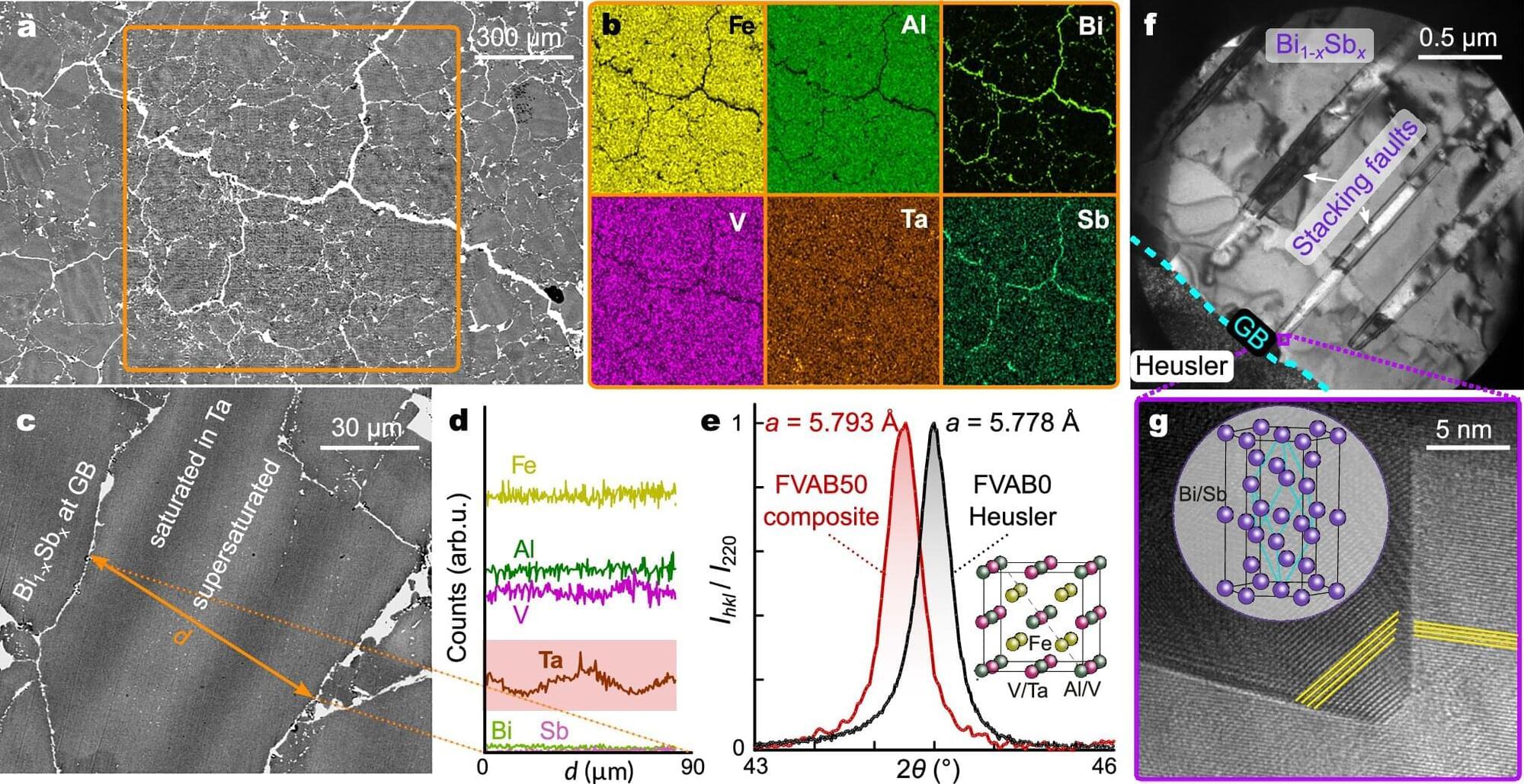Thermoelectric materials enable the direct conversion of heat into electrical energy. This makes them particularly attractive for the emerging Internet of Things. For example, for the autonomous energy supply of microsensors and other tiny electronic components.
In order to make the materials more efficient, at the same time, heat transport via the lattice vibrations must be suppressed and the mobility of the electrons increased—a hurdle that has often hindered research until now.
An international team led by Fabian Garmroudi has now succeeded in using a new method to develop hybrid materials that achieve both goals—reduced coherence of the lattice vibrations and increased mobility of the charge carriers. The key: a mixture of two materials with fundamentally different mechanical but similar electronic properties.
